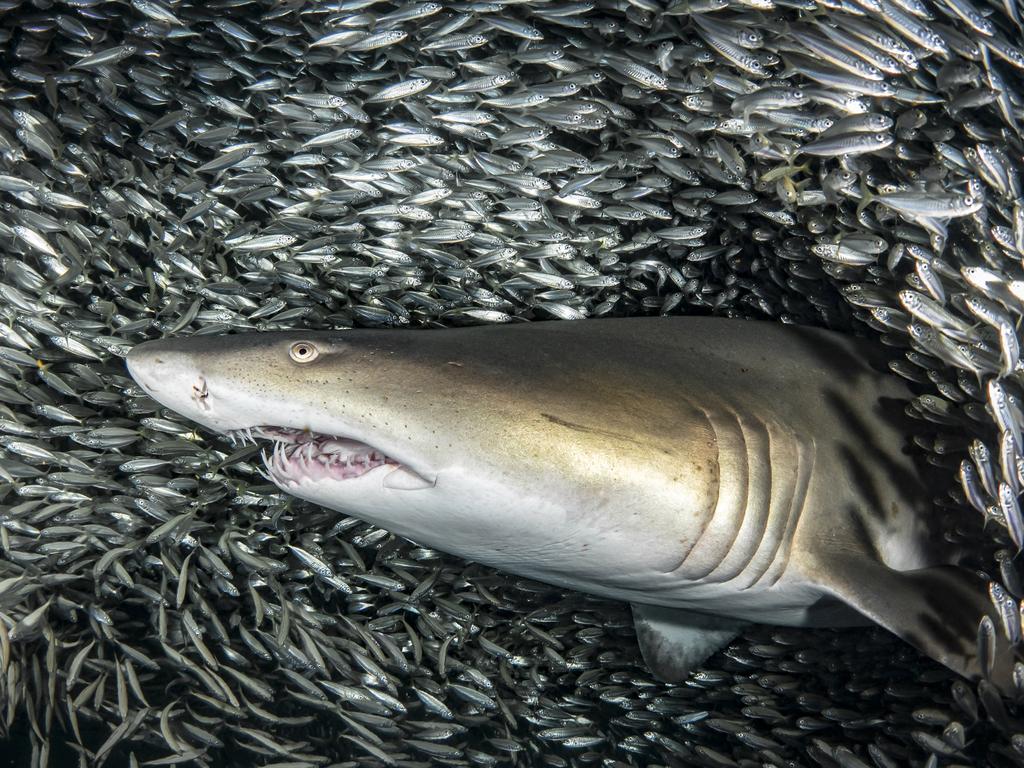Shark experts say two attacks in the same area are ‘very, very rare’
SHARK experts are racing to identify the species to blame for two brutal attacks on tourists, amid new warnings for swimmers.
QUEENSLAND authorities and shark experts have deployed shark control drumlines as they work to identify what type of shark was responsible for two vicious attacks on swimmers in the same area of north Queensland this week.
Three shark control drumlines were set up in Cid Harbour in the Whitsundays, this morning, a Department of Fisheries spokesman confirmed.
Drumlines involve a baited hook attached to a buoy and are placed strategically, usually near swimming areas, to reduce the possibility of further attacks by capturing sharks.
It comes after two tourists, a girl, 12, and a woman, 46, were attacked by sharks in the same area of Cid Harbour just 24 hours apart.
While shark experts say it’s difficult to identify what exactly caused the attacks, they have urged swimmers to take sensible precautions when entering areas of water in the Great Barrier Reef Marine Park, which covers an area of 344,000sq km and is home to about 88 species of sharks.

Queensland Shark Control Program manager Jeff Krause described the attacks as “unprecedented”.
“The priority is to reduce the current risk of dangerous sharks being in the immediate area,” Mr Krause said.
“While shark control equipment does not provide an impenetrable barrier between swimmers and sharks, it is effective in reducing the overall number of sharks in the area, making it a safer place to swim.”
According to Mr Krause, the drumlines would remain in place for at least the next week while the situation continued to be reviewed.
A Queensland Boating and Fisheries Patrol boat was also installed on site today, urging people to avoid swimming in the area.
This is the first time shark control equipment has been deployed in the Whitsundays.

Mr Krause said that experts were working to figure out whether one or more sharks were involved in the attacks and what species of shark may have been involved.
“At this stage, there is no evidence to indicate what the species of shark involved was,” he said.
“However, species targeted in the shark control program in other areas of North Queensland include tiger sharks and bull sharks.”
Mr Krause said swimmers should not be in the water alone and should leave the water immediately a shark was sighted.
“To reduce the risk of a shark attack in Queensland waters, people should be discerning when choosing where and when they swim,” he said.

Great Barrier Reef Marine Park Authority assistant director of reef conservation Dr Mark Read said shark attacks in the marine park were “incredibly rare” but two attacks in 24 hours was “very, very rare”.
“There are a variety of different species of shark that inhabit that area that can grow large enough to be a potential danger to people,” he said.
“Bull sharks and bronze whalers can get to around 3.3 metres in size and are also known to inhabit murky waters and those sorts of inshore areas.”
Dr Read said bull sharks were quite often inquisitive by nature and could become aggressive.
“Tiger sharks are often inquisitive but they’re less pushy than some of the other sharks,” he said.

Dr Read said sharks can react to a number of different factors and advised swimmers to avoid areas where boats congregate or areas where food scraps may have been thrown overboard.
“One of the things that changes animal behaviour is if they get fed, whether that be deliberately or inadvertently,” he said.
“They associate people with food and they quite often lose their natural caution which might also mean they will hang around a particular area and wait for the chance of food.
“If that animal happens to be a predatory animal like a shark, that can lead to a dangerous situation.”
Dr Read said excessive vibrations in the water could also change shark behaviour and advised people not to swim with their pets.
“A lot of pets, like dogs, swim vigorously and cause a lot of vibrations and they also probably smell very attractive to a predator,” he said.

Dr Read urged swimmers to adhere to messaging from local authorities about appropriate behaviours in the water to protect themselves and the ecosystems around them.
“People should not be swimming in areas at dusk or during the night as this is a time of high activity for sharks,” he said.
“They also should avoid areas where the water is murky as they can’t see but sharks have much better senses than we have.”

Tasmanian woman Justine Barwick had been snorkelling at the picturesque Cid Harbour about 5pm when she was bitten on the upper right part of her leg by a shark.
She was dragged from the water by witnesses and lost a significant amount of blood.
Ms Barwick is now receiving treatment in hospital.
Less than 24 hours later, a 12-year-old girl had her leg mauled by a shark in the same area.
The young girl had been visiting the popular tourist destination with her father and sister and was rushed to Mackay Base Hospital in a critical condition.
She was scheduled to undergo surgery to save her leg today.
Cid Harbour is a popular spot for boats to anchor when touring the Whitsunday Islands or the Great Barrier Reef.
The harbour has beaches and bush walking trails.
Originally published as Shark experts say two attacks in the same area are ‘very, very rare’



